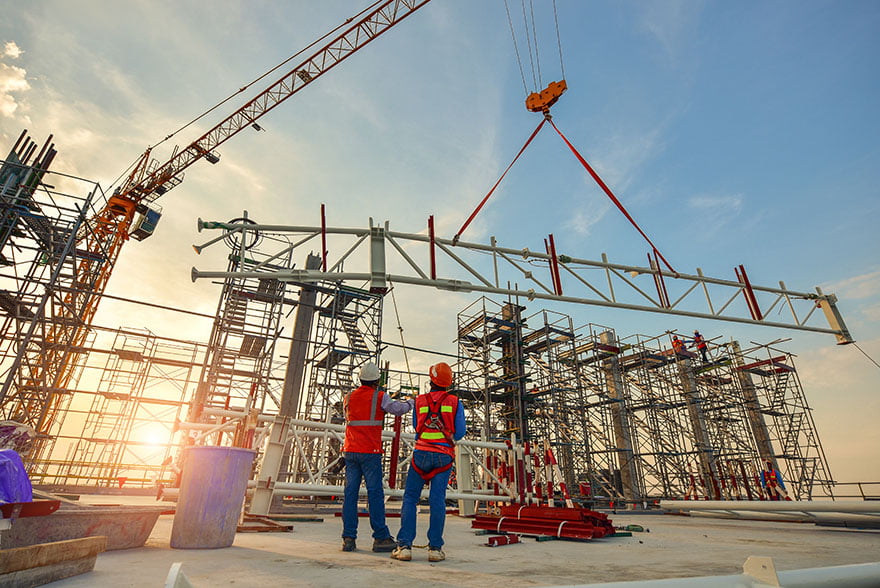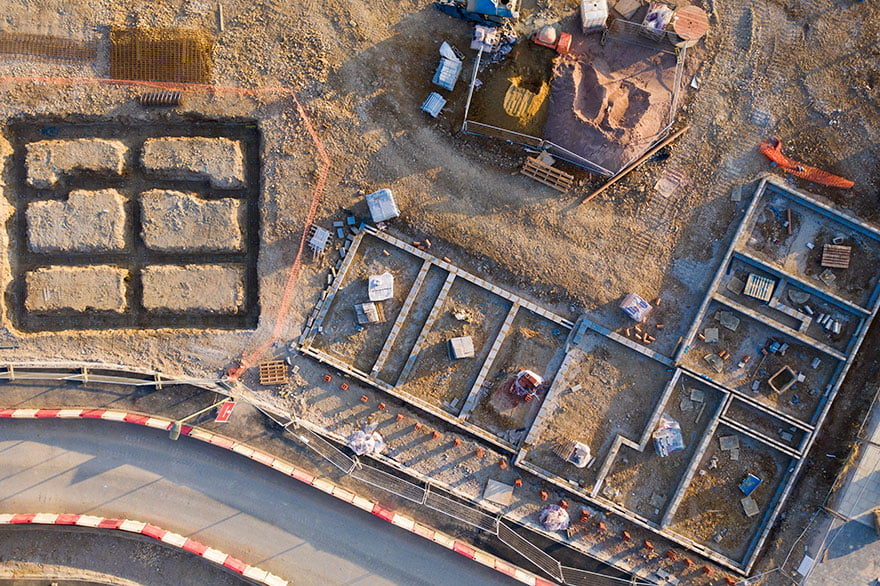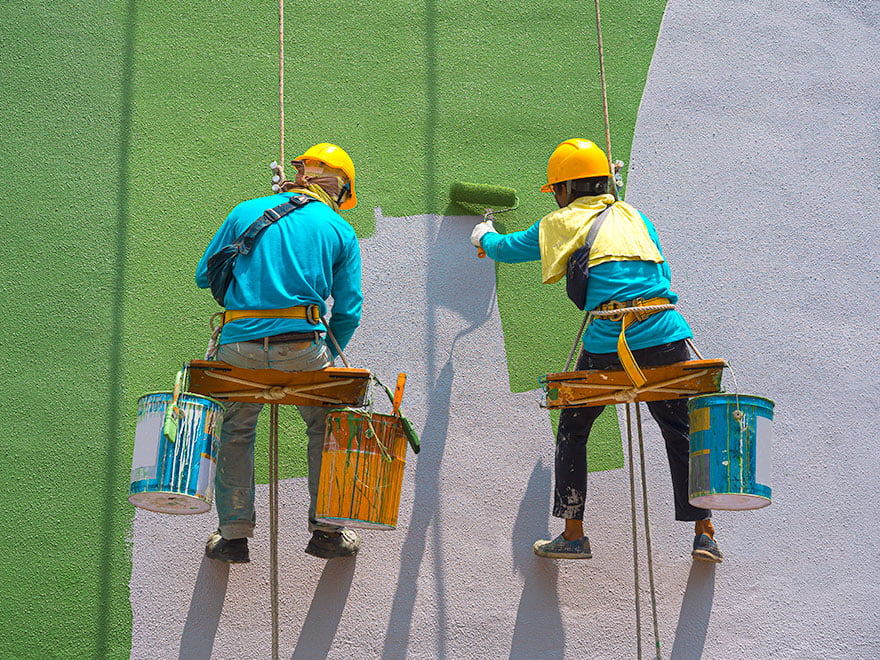Table of Contents
The first step to a successful construction project is to have a thorough understanding of the fundamentals of building construction.
Constructing a building is puzzling regardless of the type of building. Aside from the time, efforts, and investment involved, care should be taken in planning the purpose of construction and its use.


What Is Building Construction | Construction Stages of Building a House?
Building Construction Process From Start to Finish entails any form of construction that is not simple; it may necessitate a significant amount of time and money. Building construction takes a long time and is arduous work, but the end result is a long-term value for us. The process of constructing a residential structure is a systematic task carried out by skilled individuals.
Building construction projects must examine significant factors of house construction procedures such as the goal of construction, utility, financial capability, labor demand, and so on before planning.
The planning process begins once the choice to construct a building has been made. Here’s a detailed look at the building construction process from start to completion. First and foremost, do some preliminary actions.
The following are the steps involved in building a house:
Pre-Construction Steps (Phase – I)
1. To Acquire Land or Plot
it is the most important step in building construction. Search for the location for the building which is best suited for building construction purposes. Be careful while selecting land which has all the desired facilities available nearby and should be free from all land-related issues.
Prior data collecting is recommended before purchasing land or a plot, either through online research or by requesting assistance from real estate professionals or concerned individuals regarding the effective cost of the same.
2. To Seek Technical Help
Following the selection of a suitable site for construction, enlist the assistance of a competent architect to generate building designs and seek his or her advice. An architect creates a plan depending on your needs and budget, including the size of the building, the number of flats, and the number of shops.
Then, after consulting with an architect, have a structural engineer look through the details of the reinforcements to be used, the depth of your foundation, the size of gravel to be used, pillar width, and so on.
3. Preparing Estimate and Budget
The construction of a building necessitates a significant investment in both time and money. These parameters are passed to the building estimator when planning and structural detailing are finished. The building estimator will calculate the number of materials and different types of work, as well as create an abstract sheet that indicates the total cost of the project.
If your financial resources are restricted, we must seek pre-approval for loans ahead of time, or you may find yourself in a cash crunch.
4. Permission from Authorities
This is crucial work to complete once the project is ready to be implemented. Before you can begin construction, we must first obtain approval from the local municipal government.
Following are the list of document project required before applying for permission. This document may differ from state to state, but some are essential for every building construction work.
- Land survey: Survey of the land has to be carried out with the help of an authorized land surveyor
- Soil test report of the land.
- Land documents.
- Architecture/ elevation/ sectional drawings.
- Structural report.
- Architect Certificate of undertaking on Record and Certificate of the undertaking of Civil Engineer on Record
5. Approach a Builder
A construction builder or contractor must be carefully picked because it is a vital factor in ensuring building construction quality and on-time completion of work. Before handing in work, a pre-investigation on the builder is required. All work-related elements must be explicitly mentioned in the contract document.
The contract document should cover layout and work details along with the payment methods, time scales, and costs. The condition of the contract should be thoroughly checked before signing a final deal.
Building Construction Step (Phase – II)
1. Site Preparation or Leveling
The construction site must be cleaned before the work is executed. This work involves the removal of roots of trees, debris, and leveling ground area.
2. Excavation and PCC
The foundation of the building ground is excavated with the help of excavating machines as per the building dimension specified in the drawings. In this foundation trench, a layer of PCC (Plain cement concrete) is laid in the dug portion before placing the reinforcements for the foundation.
3. Foundation


The foundation is the lowermost section of the building that is in contact with the soil, and it supports the structure. The load is transmitted from the superstructure to the soil, and the building must be exceptionally robust to manage it.
The foundation reinforcement work begins after the PCC work is completed. Before pouring concrete, the foundation’s bottom level must be checked. Earth is used to fill in the gaps between the foundations.
4. Plinth Beam and Slab
After the foundation construction is completed, the ground beam formwork is commenced and concrete is poured. Masonry construction has begun above the plinth beam. The earth fills the area between the foundation and the plinth beam.
5. Superstructure – Column
The superstructure is the portion above the plinth level of the building. The main component of the superstructure is a column and beam. The columns are built up to slab level and the frame for further construction is prepared.
6. Brick Masonry Work
As the column and beam framework is completed masonry work is started with different materials such as bricks, concrete blocks, fly ash bricks, etc. according to the building drawing. Masonry work is done using a cement mortar mix. It is a mixture of cement & sand. During this carefully and as per drawing gaps are laid for doors and windows during the masonry work.
7. The Lintel Over Door Window Gaps
The lintel is used to support the masonry construction above the door and window. After that, more masonry work is completed.
8. Floor Slab or Roof Structure
Then the formwork is started to construct the slab resting on the column and beam. Over slab formwork, slab reinforcement is placed as per slab detailed drawing.
9. Door Window Framing and Fixations
Following that, the door window frames are installed in the specified position as shown in the drawing.
10. Electrical and Plumbing
Buildings, as we all know, are built with a pristine surface that conceals electrical and plumbing equipment. They are disguised and not apparent when the finishing work is completed, as they are installed in the walls and slabs. The point and pipe ends are left unfinished so that the electric fitting and plumbing fixtures can be added later.
11. Exterior Finishing
Once this work is completed, external plastering and finishing work is started. Waterproofing is also done to prevent rising dampness in the wall. External cladding can also be done to enhance the elevation of the house.
12. Terrace and Roof Finishing
Waterproofing is applied to the slab’s surface to prevent leaks. Terrazzo tiling is typically done to prevent the slab from weathering.
13. Internal Finishing
Internal plaster walls have a smooth texture, and the flooring is tile. The walls are then painted or textured.
14. Woodwork and Fixture Fittings
Following the steps above, practically all of the building work is accomplished, and then the furniture work begins. Electrical, switchboard, and plumbing fixtures are all installed side by side in the bathrooms and kitchens.
15. Waterproofing
Waterproofing is a technique for keeping water out of your home. Waterproofing is crucial because it keeps your home dry. It helps to minimize humidity inside the home, protecting your belongings from harm caused by humidity or water exposure.
16. Painting Work


The most important goal of house painting is to extend the life of our home while adding color gives it a gorgeous makeover. Painting not only adds color to a home’s walls but also protects them from stains and filth, extending the life of their home. However, stains do find their way onto walls.
From simple paint to high-quality paint that can provide our house 5 to 10 years of extra life and an excellent look for both the exterior and inside, there are numerous paint qualities that can be used to protect our house for a long time from stain, mud, sunlight, rain, dirt, and so on.
To Finish up
Different stages of work are carried out by engineers and supervisors during the construction of a building. The architect, structural designer, and management team are in charge of the majority of the pre-construction work.
With us you are one step closer to fulfilling your dream we have a huge collection of ready-made house plans to suit any criteria of your choice from modern house plans to farmhouse house design, we do custom design ( from start to finish or modifying an existing design).